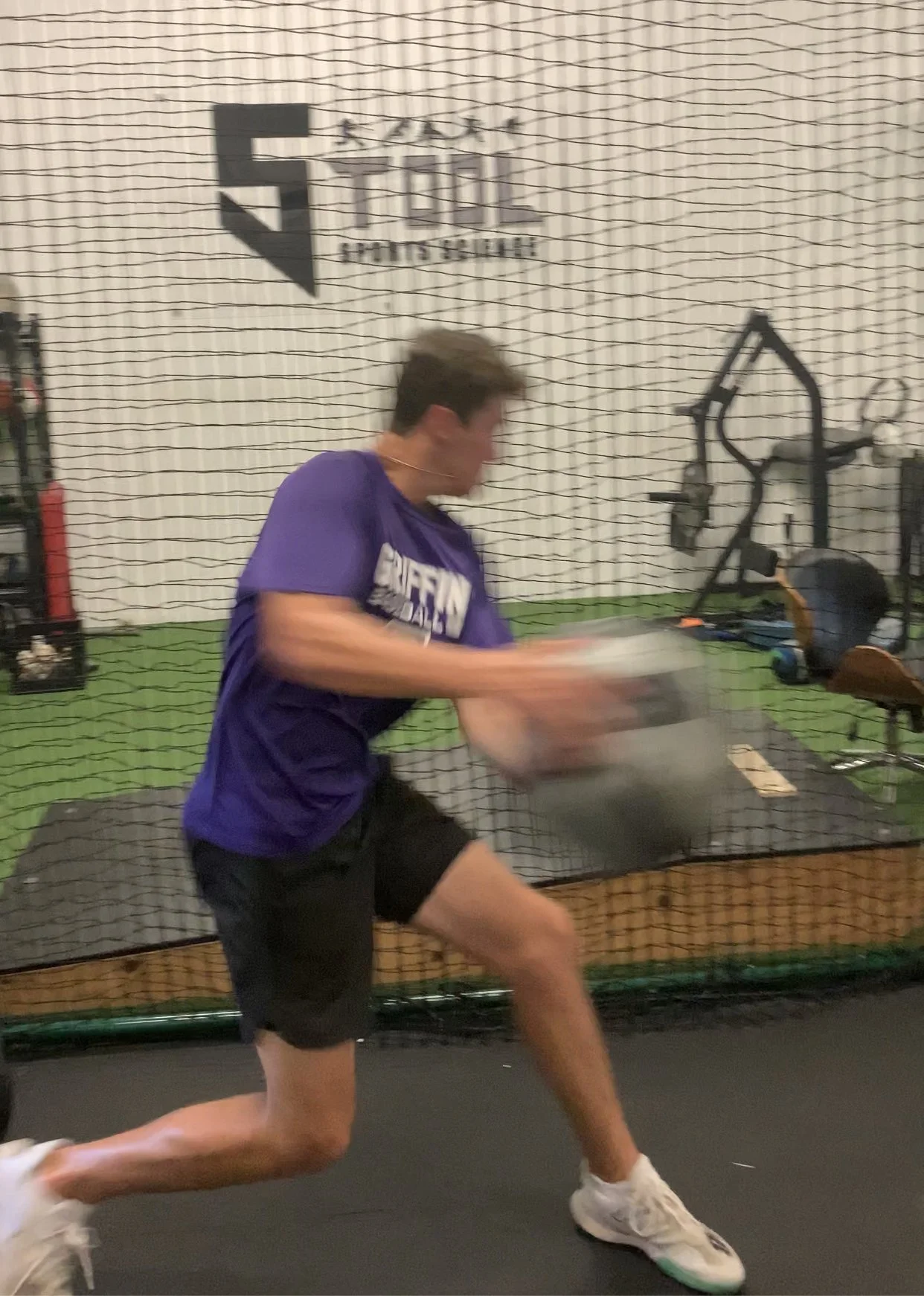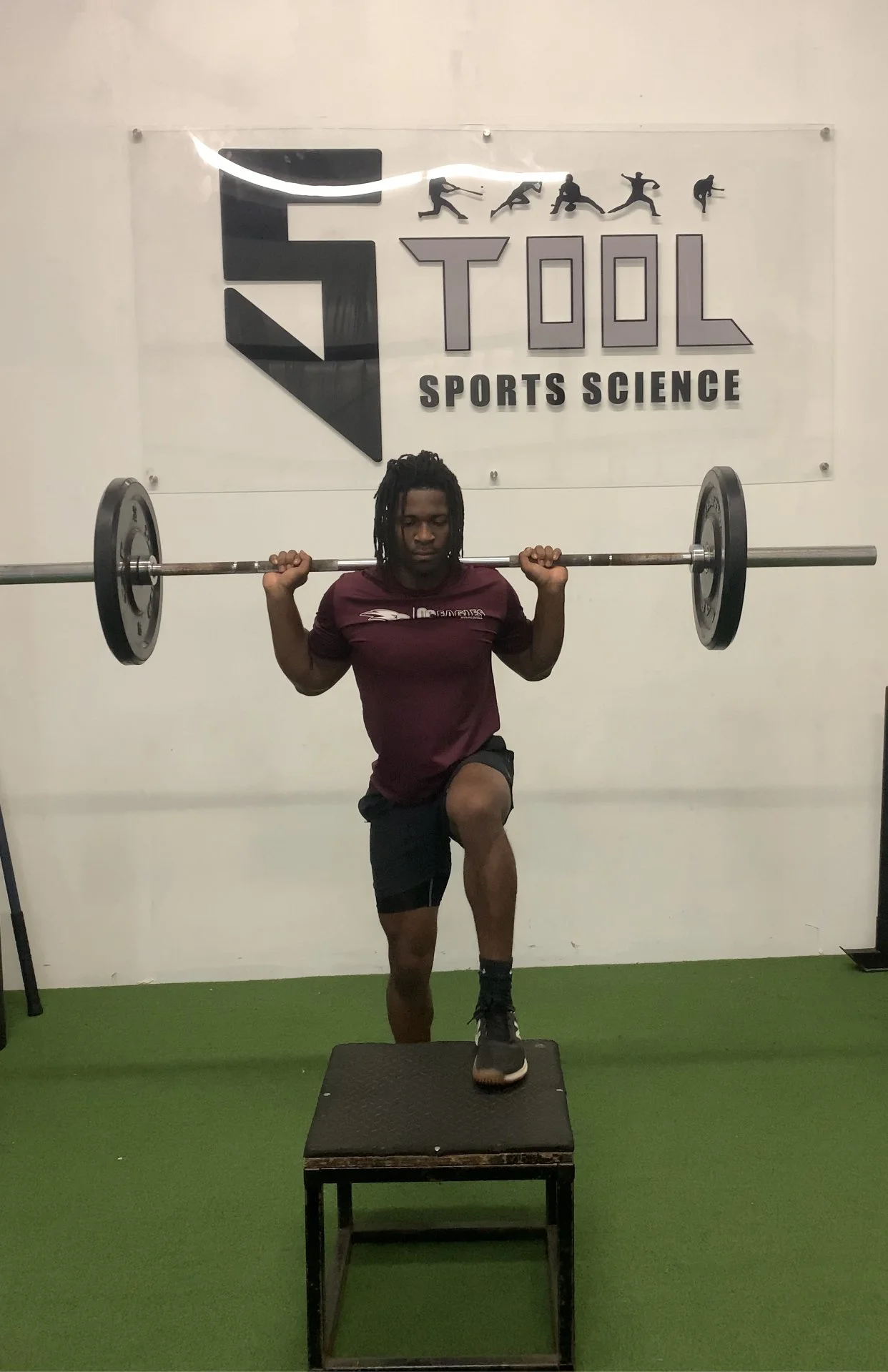The Serape Effect: The Transmission That Turns Hip To Shoulder Separation Into Pitching Velocity
You’re probably reading this because you want to throw harder and become a better pitcher. Want to know the secret? Here it is. Horsepower and transmission. In this article, we’ll discuss how horsepower and transmission, through the serape effect, combine to create elite-level pitchers. We will discuss how it separates them from low-velocity pitchers, and most importantly, how you can train to improve it. Let’s dive in.
The Horsepower: Size, Strength and Explosiveness
The real engine of velocity is building horsepower. Horsepower is the size, strength, and explosiveness that high level players and throwers possess that low velocity guys don’t. In on study, the looked at what separates Rookie-ball prospects from MLB players. Hoffman et al. tracked 343 professionals and found clear progression by level: MLB players averaged ~223 lb body mass (101.2 ± 10.5 kg) versus ~203 lb in Rookie (92.0 ± 9.8 kg); they carried more lean mass (87.1 ± 7.9 kg vs. 80.8 ± 7.0 kg); jumped higher on average (71.9 ± 8.2 cm ≈ 28.3 in vs. 70.1 ± 7.6 cm ≈ 27.6 in); produced greater vertical-jump peak power (11,542 ± 849 W vs. 10,798 ± 791 W); and were faster over 10 yd (1.52 ± 0.10 s vs. 1.57 ± 0.09 s). The authors state: “Players in MLB were also faster (p < 0.05) than players in AA, A, and Rookie. Vertical jump power measures were greater (p < 0.05) in MLB than AA, A, and Rookie.” In short, the biggest, strongest, fastest, most explosive athletes were climbing the ladder. That horsepower forms the foundation, but without the right transmission, it doesn’t translate to velocity.
The Transmission: Timing, Sequencing, and the Serape Effect
That’s where the transmission comes in. The transmission is timing, sequencing and what some studies call the “serape effect”. The serape is a diagonal, crisscrossed connection of muscles and tissues linking the opposite upper and lower limbs, enabling stretch and rotational stability between the trunk and pelvis. If horsepower is the engine, the serape effect is the transmission. Throwing is a whole-body kinetic-chain action: “The overhead throwing motion is a coordinated effort of muscle units from the entire body, culminating with explosive motion of the upper extremity.” This diagonal sling (external/internal obliques, serratus anterior, rhomboids) stretches as hips open while the trunk stays back, then recoils to rotate the trunk and whip the arm. Without that sequencing, pitchers end up muscling the throw and leaving mph on the table.
The Reactive Window: Foot Strike to Ball Release
Here’s the problem: by the time your front foot hits the ground, everything is reactive. You can’t “fix” mechanics consciously in that instant. As one clinical review notes, “The time elapsed between front foot contact and ball release is only 0.145 seconds.” That’s faster than a blink! Pitchers should focus on developing the ability to create and maintain a controlled disassociation between the hips and trunk. Then work on stabilizing the pelvis while allowing the upper body to rotate (we will take more about this later with the front leg block). This enhances the timing and sequencing of movements. They also need to improve the stretch and elasticity of the diagonal muscle chains by training the muscles to lengthen under tension and then recoil efficiently. At the same time, they must build the motor control and stability to hold this stretch longer. This combination generates more power while also reducing injury risk.
This is why training has to build reactivity and coordination. Effective tools include:
Plyo throws
Rotational med-ball work
Rotational cables
Slings
Unstable implements (e.g., water bags)
The Front-Leg Block: Anchoring and Energy Transfer
Another key to the serape effect is the front-leg block. The lead leg must anchor and decelerate the body so energy rebounds up the chain. This stability allows the trunk to rotate effectively against a locked pelvis, enhancing the stretch and tension in the serape muscle lines for better rotational power and control. Biomechanics work comparing high- and low-velocity pitchers reports that “…lead knee extension angular velocity at the instant of ball release were significantly greater in the high velocity group.” Relatedly, a review summarizing prior findings states “the ability to drive the body over a stabilized stride leg is a characteristic of high-ball-velocity pitchers.” Together, that’s your anchor for the serape sling to unload into the trunk and arm. Training both strength and speed along the force-velocity curve enhances the front leg's Rate of Force Development (RFD) by improving its ability to generate high force quickly, which is critical for effective use of the serape effect. Effective exercises are:
Strength Exercises:
Split squat/Lunges
Single-Leg Squats
Step-Ups
Explosive Exercises:
Plyometrics focusing on reactivity and deceleration.
Ballistic exercises: Explosive Step-Ups, Split Jerk, VBT <30% 1 RM
Band overload water bag or med ball drills
The Takeaway: Horsepower Meets Transmission
The takeaway is clear: professional pitchers combine horsepower and transmission. Size and strength provide the engine, but the serape effect and lightning-fast reactivity after foot strike translate it into pitching velocity. Build horsepower, yes; but also train timing, coordination, elastic recoil, and a firm front-leg block. That’s the difference between high velocity throwers and low velocity throwers. If you read this far thank you so much! Hope it helps and please reach out if you have any questions or if there is anything I can do to help you on your baseball journey.
Works Cited
Fleisig, Glenn S., et al. “Kinetics of Baseball Pitching with Implications about Injury Mechanisms.” The American Journal of Sports Medicine, vol. 23, no. 2, 1995, pp. 233–239.
Fortenbaugh, Dave, et al. “Baseball Pitching Biomechanics in Relation to Injury Risk and Performance.” Sports Health: A Multidisciplinary Approach, vol. 2, no. 4, 2010, pp. 314–320.
Hoffman, Jay R., et al. “Anthropometric and Performance Comparisons in Professional Baseball Players.” Journal of Strength and Conditioning Research, vol. 23, no. 8, 2009, pp. 2173–2178.
Matsuo, Tetsuo, et al. “Comparison of Kinematic and Temporal Parameters between Different Pitch Velocity Groups.” Journal of Applied Biomechanics, vol. 17, no. 1, 2001, pp. 1–13.
Seroyer, Stacie T., et al. “The Kinetic Chain in Overhand Pitching: Its Potential Role for Performance Enhancement and Injury Prevention.” Sports Health: A Multidisciplinary Approach, vol. 2, no. 2, 2010, pp. 135–146.





